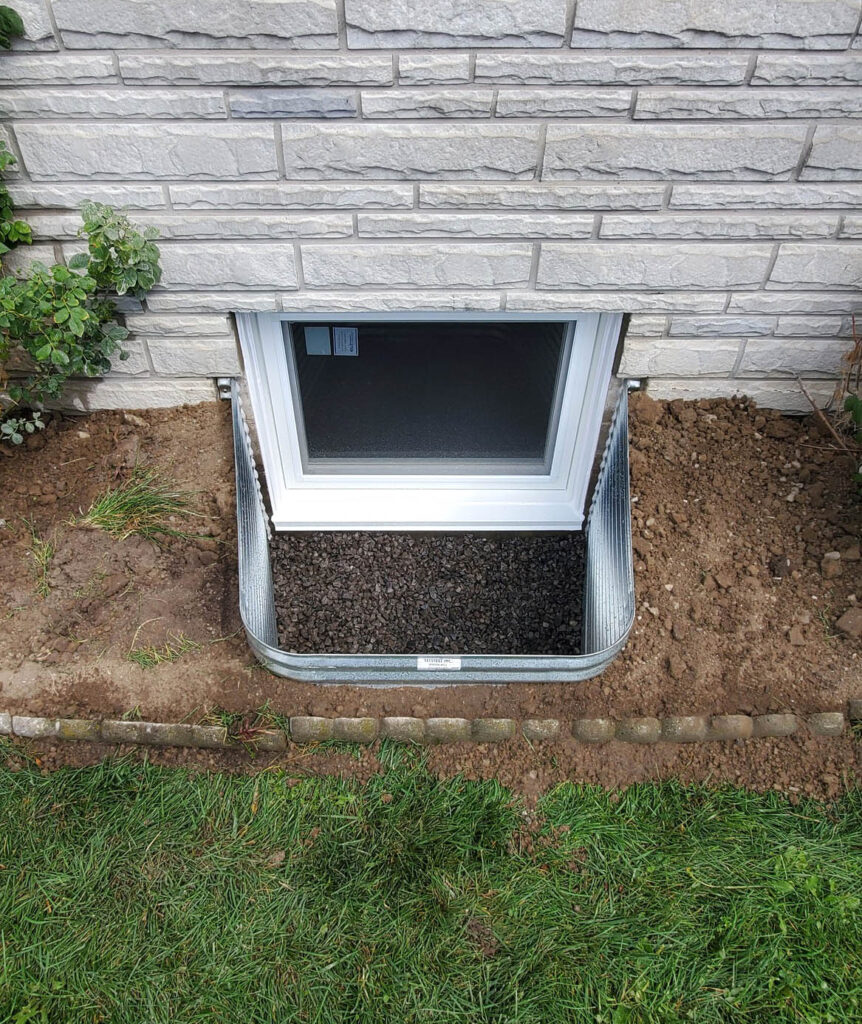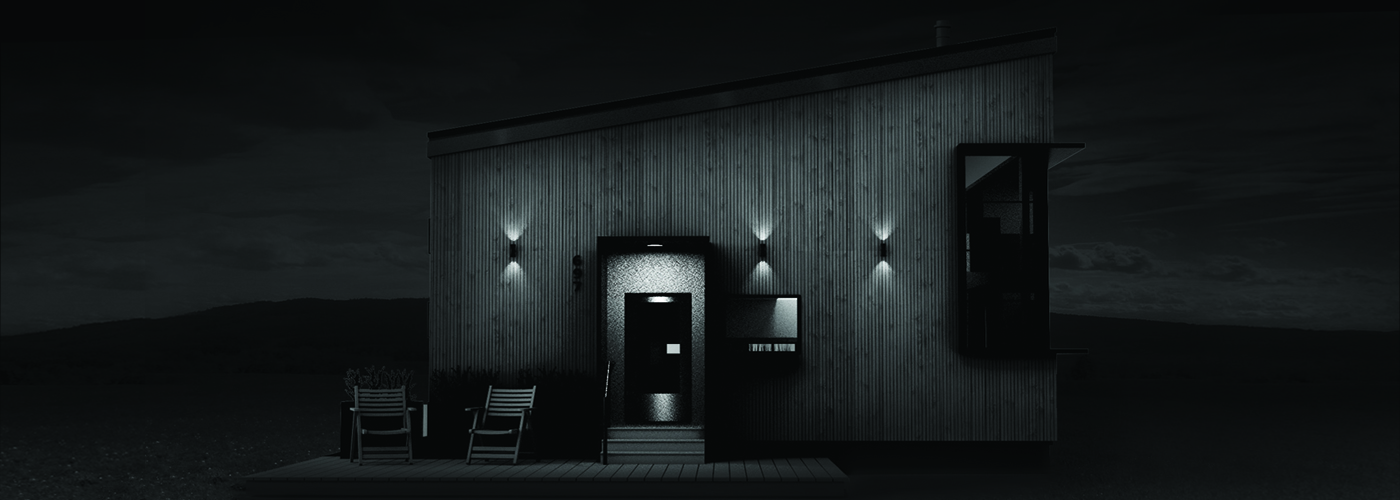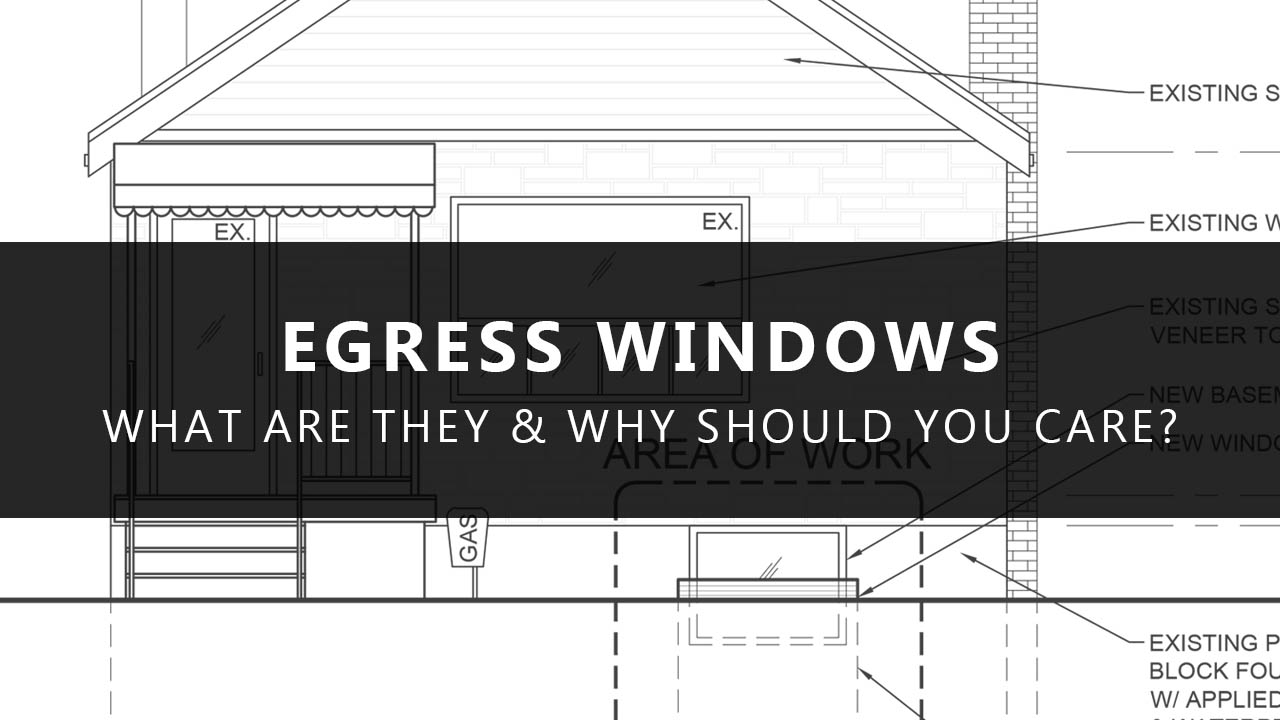
What is an egress window, and why should you care? Well, if you live in a house, it might just save your life during an emergency.
An egress window is a window in a building that can double as a second exit during an event such as a fire. These are particularly important in residential basements where occupants could be trapped if the main exit stairs become blocked. To qualify as a secondary means of egress, the window must be operable and meet specific dimensions of the Ontario Building Code. These requirements allow a person to pass through the window opening to safety outside. Most basement apartments and secondary suites require an egress window, so getting the details right can be vital if you have tenants.

So it should be obvious; the main reason for having an egress window is life safety. The building code was put in place to help save lives and the smart folks who wrote it noticed that apartments are much safer when they have two exits. Therefore, most apartments are legally required to have a second exit of some sort. Quite often in residential homes, the easiest and most cost effective way to create a second exit is with an egress window. If you are converting a basement into a rental apartment (which is a great idea, by the way), then putting in an egress window is likely required for building permit approval, although there are some exceptions. As always, check with your local architect or building department for details.
So what are the specifics? Section 9.9.10.1 of The Ontario Building Code outlines some of the requirements for an egress window below:
• Is openable from the inside without the use of tool
• Provides an individual, unobstructed open portion having a minimum area of 0.35 m² with no dimension less than 380 mm
• Maintains the required opening described above without the need for additional support
• When sliding windows are used, the minimum dimension described shall apply to the openable portion of the window
• Where a window opens into a window well, a clearance of not less than 550 mm shall be provided in front of the window
• Where the sash of a window swings towards the window well, the operation of the sash shall not reduce the clearance in a manner that would restrict escape in an emergency.
You may have noticed the reference to a window well, which is also common when dealing with basement egress windows. These hold soil away from the foundation wall so that the window opening can extend below ground level, and also gives some clearance for anyone needing to crawl out in an emergency.
There is a commonly held belief that the egress window for a basement apartment must be located in the bedroom, but that isn’t necessarily true. It depends on the specifics of each particular house, but an egress window can often be located elsewhere like in a kitchen or living room. That said, having one in each bedroom certainly doesn’t hurt in terms of safety.
Not only are they safe, but because of their larger than average size, egress windows tend to bring a lot of extra light into a basement which helps create a nicer living environment for your tenants or family. Of course, they will be slightly more expensive than a smaller, traditional window, but well worth the cost during an emergency.
If you’re considering a basement renovation or egress window, please consult a local architect or your building department for more detailed information. If you’re located in Ontario and want to explore the details of the Ontario Building Code online, click here.


